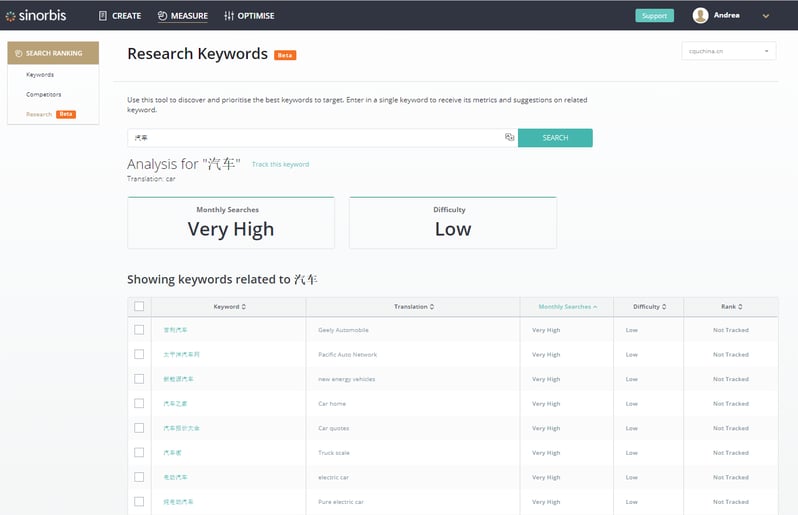Google’s dominance in the search engine market is unmatched in the world. With one exception: China. In the Middle Kingdom, the tech giant has been unable to establish itself as local regulation would have required Google to limit access to information considered sensitive by the government.
While there has been some talk lately that Google may be planning a comeback in China, it’s unlikely that the search engine from Mountain View in California will reach the same level of popularity as the local Chinese players any time soon.
China’s most widely used search engine is Baidu, but unlike Google in the rest of the world, it’s not without serious competition. Sogou, “mobile-first” Shenma and So.com also own significant market share – with Sogou alone attracting over 330 million active users per day.
Given these key differences in the search engine landscape, it can be difficult to identify what steps you need to take to ensure that your Chinese website is ranking highly for your most important keywords.
Here are our 5 tips for developing a successful Chinese search engine marketing strategy.
1. Identifying the right keywords to target for your brand
Any search marketing strategy should start with some research around the keywords you should be targeting - apart from the obvious branded keywords such as your company name. There are several criteria you need to take into consideration for this. As a starting point, you should develop ideas and topics that are aligned with your product and services, as well as any other topics that your potential customers might be searching for when looking for a business like yours.
For instance, a university could target keywords like “study abroad application” or “best degrees to learn” which are phrases their target audience might search for and are also relevant to the university’s goal of attracting international students. As you can see, it’s important to strike the right balance between your audience’s search intent and your offering here and neither being too specific nor too broad.
Once you have identified what keywords might work well for your company, it’s important to confirm your assumptions with data. After all, you don’t want to spend a lot of effort optimising your content for keywords that won’t drive any more relevant traffic. You will want to make sure that you are targeting a range of keywords with high and low search volumes, as well as different levels of difficulty.

The screenshot above showcases the search volume for the keyword car (汽车) as identified by the keyword research tool on the Sinorbis platform.
2. Creating a mobile responsive site
A mobile responsive site is one that can comfortably transition between mobile and desktop devices by altering the image sizes and content to fit the screen.
Chinese search engines place an immense focus on websites that are flexible between screens as 95% of China’s internet population use their mobile to go online. You can find out more about the technical aspects of creating a mobile responsive website in this post.
At a high-level, creating a mobile responsive site means making the experience for a smartphone user as smooth and seamless as possible. This includes making links easy to find and click, getting the font size right and removing ads that might feel out of place on a smaller screen.
A website that isn’t mobile responsive will have trouble getting top search engine rankings and so, even if you’ve done your homework on your keywords, will have trouble reaching its target audience.
3. Don’t put all your eggs in the Baidu basket
Yes, Baidu is where most Chinese citizens go when they are looking for information. But that doesn’t mean there aren’t millions of others that use an alternative search engine, usually one of Sogou, Shenma or Qihoo 360.
20% of people use one of these and not Baidu. So, you could be missing one in every five potential customers, which will gradually lead to a much bigger loss than if you divided your attention across them all.
What’s more, SEM advertising on Shenma and Sogou can be much cheaper than on Baidu, because there are less organisations bidding the Pay Per Click (PPC) price.
Sogou, the second most used search engine in China, allows you to target a broad market at a much lower cost which might make it better suited for smaller budgets. Developing your Sogou SEO and SEM is something certainly worth considering.
4. Chinese search engines prioritise speed
A website from beyond China might be able to be accessed, but because of the heightened securities from the Great Firewall of China, this severely slows down the loading speed of the website.
In doing so, Chinese search engines will overlook this slow loading site for websites that can be easily and quickly accessed to provide their users with the best experience.
The best way to get a fast loading page is by hosting your servers in mainland China, which first requires a complex process of getting an ICP license. Instead, you can use the Sinorbis platform to create your website, which guarantees fast loading speeds in China even if you are unable to host within China.
To further improve the loading speed, optimising images, removing ads and reducing redirects are all factors that will make a difference.
5. Use data analytics to understand your consumer
Baidu themselves provide an insight platform called Baidu Zhisu where you can search for search trends in China just like Google Analytics.

By using the Baidu trends to understand the trends and your Chinese consumer, you can create marketing campaigns that will be further personalised for your target market.
If you’d prefer an English platform to analyse Chinese trends, Sinorbis offers a similar service where you can track keywords that are related to your business.











